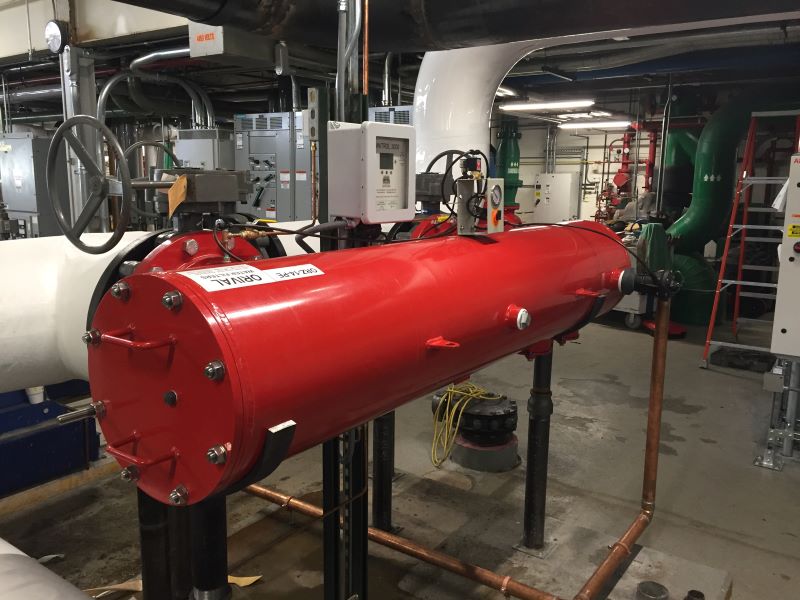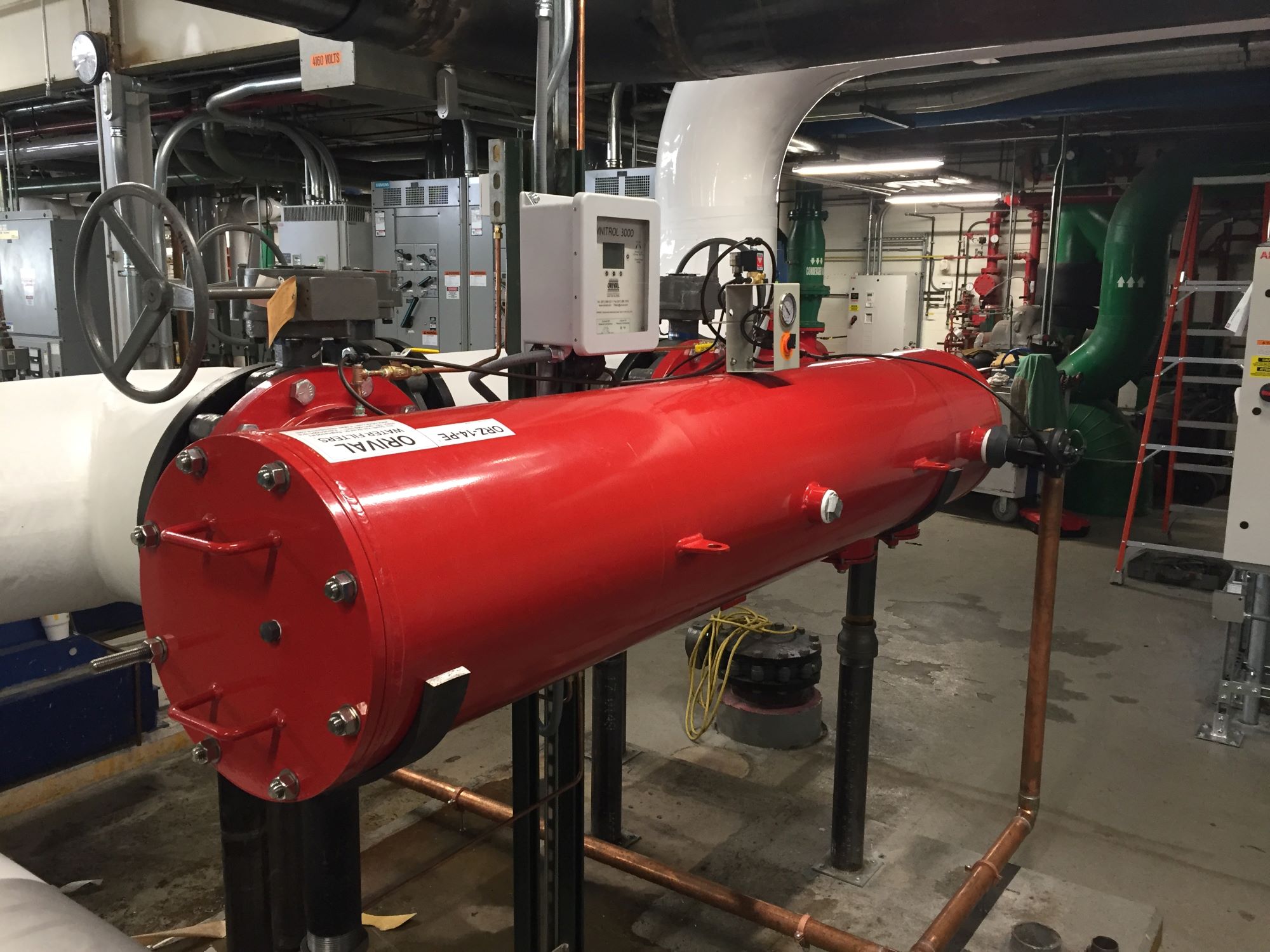Chiller Water Filtration Solutions
Chillers are available in either air cooled or water cooled versions. In either case, the chiller is used to remove excess heat from a water stream, which is then used for either comfort or process cooling.
The evaporator side of the unit, or chilled water side, is normally a closed loop system, consisting of the chiller, pump, heat exchange coil and related piping, valves, etc. The water is pumped through the chiller, where a heat exchanger is used to transfer the energy from the chilled water loop to the refrigerant. The water then travels to the heat exchange coil located within the air handling unit(s), where it picks up more energy from the airstream and is returned to the chiller.
The chilled water loop is a closed loop system, and is therefore not subject to the introduction of airborne particulates, as would be a cooling tower. It is, however, subject to the standard problems of scaling and/or corrosion, depending on water treatment practices. The scale or corrosion particulates break loose from the piping and typically accumulate in low velocity areas, usually in the chiller or air handling unit. These particulates can clog tubes, and, at the very least, will foul heat exchange surfaces, affecting system efficiency.
Once the heat is removed from the water stream, it must then be rejected to a suitable location. Our discussion here is limited to water cooled chillers.
The most common method of heat rejection is using a cooling tower. This loop, commonly referred to as a condenser loop, typically consists of an outdoor cooling tower, pump, condenser coil (in chiller) and related piping. The water is pumped through the condenser coil in the chiller, where it picks up the excess energy removed from the chilled water. The water then travels to the cooling tower, where it is exposed to the ambient air to reject the unwanted energy.

